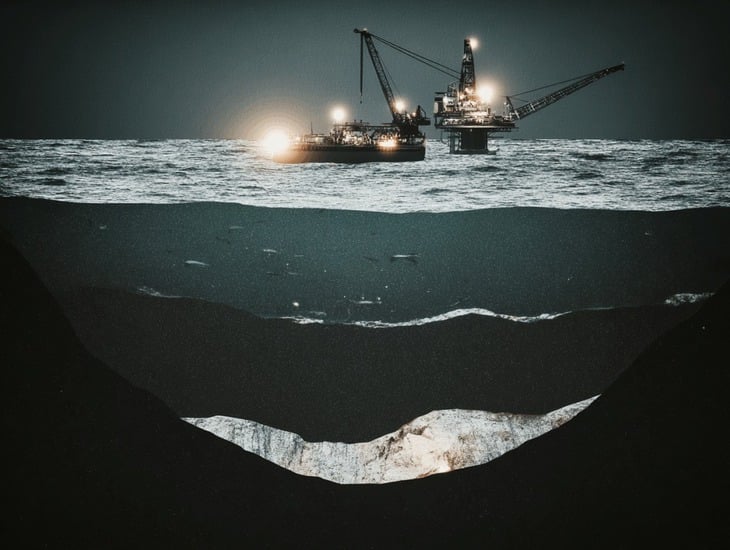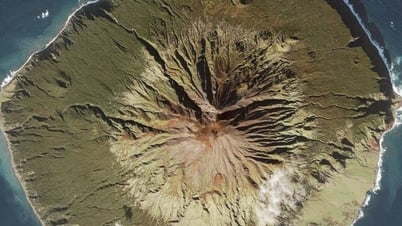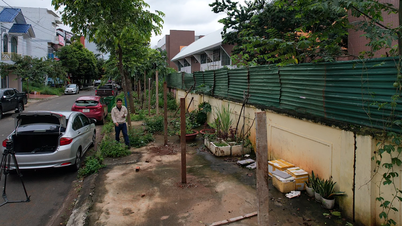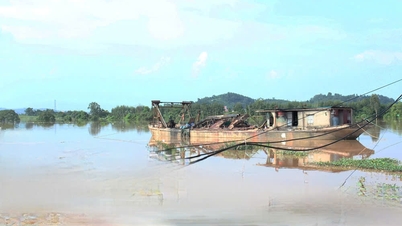
The discovery of a "freshwater treasure" at the bottom of the Atlantic Ocean opens up a new horizon for geology , hydrology and resource management - Photo: ZME Science/Midjourney
An international team of scientists has just announced a shocking discovery: a giant freshwater aquifer located deep under the Atlantic Ocean, stretching along the East Coast of the United States, from New Jersey to Maine.
This is considered one of the most important geological discoveries in decades, opening up hope for a valuable resource in the context of the world facing an increasingly severe freshwater crisis.
Half a century journey in search of "fresh water treasure"
Nearly 50 years ago, during a mineral exploration off the coast of the Northeast United States, a US government research vessel unexpectedly discovered traces of freshwater deep beneath the ocean sediments.
From that clue, this summer, the international scientific project Expedition 501 officially drilled directly to the bottom of the Atlantic Ocean, off Cape Cod.
Expedition 501 is a $25 million scientific collaboration involving more than 12 countries and supported by the US National Science Foundation and the European Union.
In this project, scientists collected more than 50,000 liters of water samples from a depth of nearly 400 meters below the seabed, confirming the existence of a giant freshwater aquifer system hidden under the saltwater.
“This is just one of many ‘secret freshwater treasures’ that we have never had access to before,” said Dr. Brandon Dugan, a geophysicist and hydrologist at the Colorado School of Mines and co-leader of the study. “They could one day play a key role in saving humanity from the freshwater crisis.”
"The sea has fresh water": a scientific mystery gradually revealed
Water samples showed salinities of just 1-4 parts per thousand, much lower than the average of 35 parts per thousand for seawater. This suggests that much of this water did not originate from the sea, but may have come from meltwater from ancient ice ages, groundwater from the mainland percolating through geological layers, or a combination of both.
The team will analyze the microbial DNA, mineral composition and radioactive isotopes in the water to determine the age of the reservoir. This will help to determine whether it is a renewable water source or a primitive source that has been "isolated" for thousands of years.
If the water is young, it means it is likely still being recharged from rain or melting ice. That means it could be a sustainable resource.
Hopes and challenges for a thirsty world
According to a United Nations report, in the next five years, global demand for fresh water could exceed supply by up to 40%. Meanwhile, rising sea levels, climate change and industrial activities are causing increasingly serious salinization of coastal waters.
Notably, data centers serving AI and cloud computing are consuming water at an “insatiable” rate. In the state of Virginia (USA), 25% of the state’s electricity is used for data centers, a figure expected to double in the next 5 years. A medium-sized data center can currently consume the same amount of water as 1,000 households.
In that context, the huge freshwater resource at the bottom of the Atlantic Ocean could be a "savior" in the future. However, exploiting this water reserve raises many complex questions: Who will own and manage this resource? How can it be exploited without harming the marine ecosystem? Is there a risk of "draining" freshwater, causing an imbalance in the seabed ecosystem?
"We need to be extremely cautious. If we exploit it massively, there will be unpredictable consequences," warned Dr. Rob Evans, a geophysicist at the Woods Hole Oceanographic Institution.
Scientists believe that if properly exploited, the freshwater reserves at the bottom of the Atlantic Ocean could supply enough water for a city as large as New York for 800 years. However, turning that potential into reality will require years of research, a series of safety tests and close coordination between governments, scientists and conservation organizations.
Source: https://tuoitre.vn/phat-hien-chan-dong-ho-nuoc-ngot-lon-chua-tung-co-duoi-day-dai-tay-duong-20250910214939051.htm



![[Photo] Binh Trieu 1 Bridge has been completed, raised by 1.1m, and will open to traffic at the end of November.](https://vphoto.vietnam.vn/thumb/1200x675/vietnam/resource/IMAGE/2025/10/2/a6549e2a3b5848a1ba76a1ded6141fae)



































































































Comment (0)